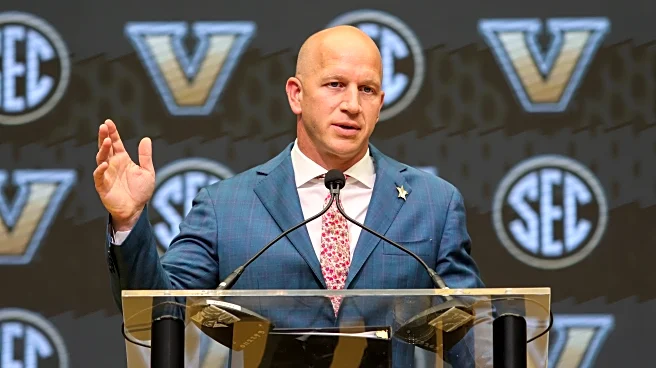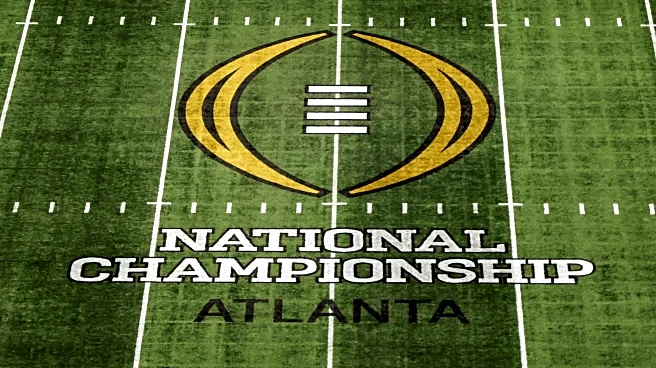What is the story about?
What's Happening?
College football programs are experiencing unprecedented spending on player positions as they enter the 2025 season. With the introduction of revenue sharing with athletes, Power 4 programs have invested heavily in retaining players and acquiring transfers, totaling over 1,400 transfers via the portal. The lack of transparency in player earnings has created an inefficient market, with exaggerated sums shared by agents and downplayed figures by general managers. ESPN surveyed college general managers and agents to define price ranges for each position, revealing that quarterbacks can earn between $1 million and $2 million, while running backs and wide receivers have varied valuations. The SEC and Big Ten programs are noted for outspending the ACC and Big 12, despite revenue share caps.
Why It's Important?
The rising costs in college football player positions have significant implications for the sport's economic landscape. Programs with substantial financial resources can secure top talent, potentially widening the gap between well-funded schools and others. This trend may influence recruitment strategies, with schools prioritizing positions that offer the highest return on investment. The financial dynamics could also impact player development, as programs may focus on retaining high-value players rather than investing in long-term talent cultivation. The disparity in spending among conferences could affect competitive balance, with wealthier programs gaining an advantage in attracting elite players.
What's Next?
As the 2025 season progresses, college football programs will evaluate the effectiveness of their spending strategies. The success of high-cost acquisitions will be scrutinized, potentially leading to adjustments in future recruitment and budget allocations. Stakeholders, including coaches and athletic directors, may advocate for increased transparency in player earnings to address market inefficiencies. The NCAA and conference leaders might consider regulatory measures to ensure fair competition and prevent excessive spending. Additionally, the impact of revenue sharing on player retention and transfer decisions will be closely monitored.
Beyond the Headlines
The financial dynamics in college football raise ethical questions about the commercialization of amateur sports. The emphasis on monetary value may overshadow the educational and developmental aspects of college athletics. The evolving landscape could prompt discussions on the role of agents and the influence of external financial interests in shaping player careers. Long-term shifts may include changes in how college sports are perceived, with potential implications for fan engagement and the cultural significance of college football.
AI Generated Content
Do you find this article useful?












